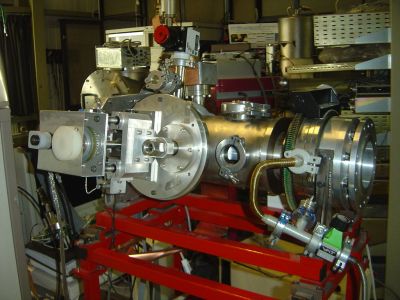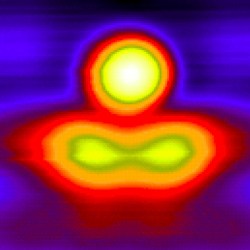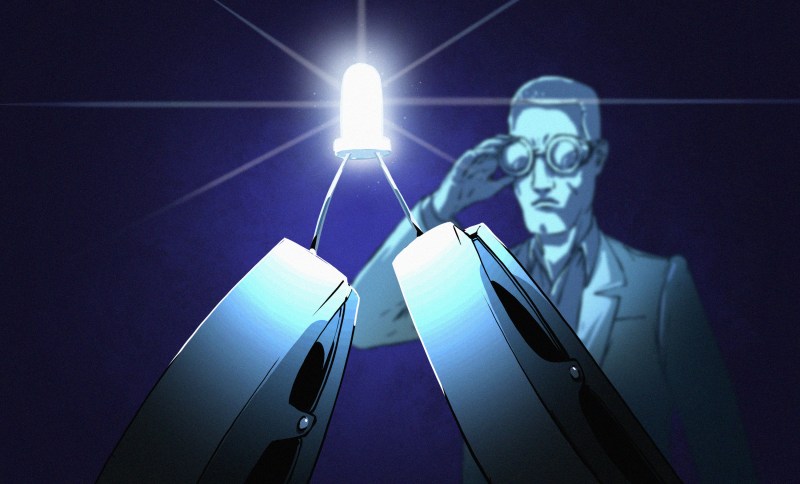
One of the humbling things about writing for Hackaday comes when we encounter our readership and learn the breadth of our community and the huge variety of skills and professions you represent. Among your number are a significant representation among scientists, and as a result we often receive fascinating previews of and insights into their work. Sometimes they deserve a little bit more attention than one of our normal short daily pieces, and such a moment has come our way this week.
We’ve been fortunate enough to have an early look at a paper which makes detailed observations of a hitherto barely characterised property of semiconductor junctions that might have some interest for Hackaday readers in their work. In their paper, [Mellie], [Bacon] et al at Fulchester University in northeast England take a look at incandescent luminescence, a fleeting and curious effect exhibited by all semiconductor junctions in which they emit short-duration high-intensity infra-red and visible light with an extremely fast rise time when presented with high levels of current. This is a property which has been rarely exploited in commercial devices due to the large current densities required to reproduce it.
Incandescent Luminescence Explained
If you’ve never heard of incandescent luminescence before then you’re in good company, for neither had we until it was explained to us. It appears that there are a set of higher energy state conductivity bands in a semiconductor junction that can only be reached once the current passing through it breaches a threshold governed by the available quantum plasma dipole moment of the semiconductor material in question. At this point the junction assumes a plasma condition resulting in the abrupt emission of infra-red and visible radiation, the incandescent luminescence phase has been triggered.

Though it has been known to science since first being observed in the early 20th century by the earliest experimenters in the field of semiconductor junctions, the transitory nature of the phenomenon has traditionally been a barrier to its proper examination. The British team took a selection of commercial semiconductor devices very similar to the types that might be used by Hackaday readers, placed them in a chamber, and used an array of photoelectric sensors coupled with ionising detectors using americium-241 alpha radiation sources to measure their emissions.
The resulting data was then harvested for processing through a stack of custom high-speed ADC cards. Current densities from as low as a few milliamps to hundreds of amps were tested across forward-biased PN diode junctions using a computer-controlled DC power supply, resulting in a variety of spectra and showing the resulting thermionic photon emission at higher currents to have a preponderance in the infra-red region.

A series of experiments were conducted to investigate a related effect first described by those early scientists in the field: that the atmosphere in which the semiconductor junction sits has a significant effect on the way it exhibits incandescent luminescence. Bathing it in gaseous CO₂ or nitrogen was found to reduce the phenomenon by as much as 95%, while immersing it in liquid nitrogen resulted in it becoming completely unobservable. Oxygen-rich atmospheres by comparison served to enhance the luminescence observed, to the point that in one of pure oxygen it reached an efficiency level of 100%.
The high conversion efficiencies and rapid onset of incandescent luminescence once it has been triggered compares favourably to those of existing devices such as LEDs or wire-wound resistors used where either infra-red or visible light is required. The researchers expect the effect to be exploited in such product families as photographic flash generators, electronic igniters, and other short-duration high-intensity applications. Given their obvious advantages, we’d expect their effects on those particular markets to be nothing short of incendiary.
Thanks Ellie D. Martin-Eberhardt for some invaluable inspiration and technical help with covering this story.
Near-IR spectrum: Deglr6328 [CC-BY-SA-3.0].
Test chamber: David Monniaux [CC-BY-SA-3.0].
Infra-red image: National Institute of Standards and Technology [Public domain].















” It appears that there are a set of higher energy state conductivity bands in a semiconductor junction that can only be reached once the current passing through it breaches a threshold governed by the available quantum plasma dipole moment of the semiconductor material in question.”
Say that three times fast.
So…now we are trying to let the smoke out?
Reminds me of: http://www.hpl.hp.com/techreports/Compaq-DEC/WRL-TN-13.pdf
‘We also tried to elicit electroluminescence in two non-pickle media, a segment of ‘‘Mandarin
Orange’’ (raw) and a piece of stir-fried ‘‘Bok Choy.’’’
This made my day. Thank you.
PhD material right here. I tried to replicate the experiments as described, but the resultant magic smoke obscured my observations of the incandescent luminescence. Should I boost I the current?
I observed this effect in resistors four years ago. To the day.
Wasn’t the light emitting resistor invented long ago? Granted, they’re not particularly efficient at emitting visible light.
Its a turbo encabulator~!
No, not really. Turboencabulators are sophisticated vaporware equipment. This is just blowin’ smoke…
:D
i fkin hate a1st
Me too.
my favourite semiconductor indicator!
the N.E.D., noise emitting diode!
Smoke emitting deadode.
Jenny… with all due respect, I think /I/ might be able to do better than this. One of the finer points of April Fools’ Day (as quite well appreciated well by my father, much to my inevitable annoyance) is that you’re not supposed to be able to tell that it’s BS until someone yells “April Fools!” at you. The term you’re looking for here is ‘suspension of disbelief’ — the prank has to be moderately believable to be pulled off correctly.
This particular article fails that test and fails it fairly rapidly. I was skeptical by the end of the 2nd paragraph, and I figured it out (and stopped reading) at the last sentence of the 3rd paragraph. Given the length of the article, that’s not going to get you a very high grade…
While I’ve got some assigned writing of another nature to do over the next few hours, sometime this evening (Eastern US time) I might just try my hand at something here and see if I can, in fact, do one better. If I succeed, I’ll throw it up the Tips line… a suggestion as to what file format to submit a complete prewritten article in, would be appreciated, BTW, as I’ve researched that in the past and can find no mention of it.
Whoopeedo
I too got it in the second paragraph – from one word, viz Fulchester. I read every word of the article ‘coz it was funny.
Well done.
One has to take one’s obscure references from somewhere. And who knows, perhaps Biffa Bacon did grow up to be a research scientist!
“Mutha! That fukk’n diode called ye a hooer!”
Are we really doing this? Are we, as a community, critiquing the quality of a gag article? We have now come full circle, and I am disgusted. If you recognized it was a fake, on the day they always write fake articles, you aren’t some prodigy of higher intelligence. We all knew this was coming, because it’s tradition. Go stuff your tip article where you left your humor.
Currently (sic) researching Characterization of Incandescent Luminescence in Bio Electro/Mechanical Junctions in the interest of production of carbon nano-particles and azure gasses . Volunteer reserves appear to be in retrograde.
That’s the longest write-up on an April 1st Light-bulb filament I’ve ever seen.
If that was 100% efficiency of emitted IR whilst the device in
question remains at NTP then I would be impressed but, that
claim gave it away, sorry. Though nice try for the day, congrats :D
Well, FWIW ;-) at least this post wasn’t about 3D printing or some sort of HaD “Contest”.
The lack of 3D printer diddling was the joke :P
I did once invent an acoustic battery, but I didn’t publish because I could imagine a suitable use case.
http://stm32duino.com/viewtopic.php?f=3&t=22&p=1558&hilit=bang+battery#p1558
Bob Pease smiles at your shenanigans:
http://www.electronicdesign.com/lighting/whats-all-hoax-stuff-anyhow